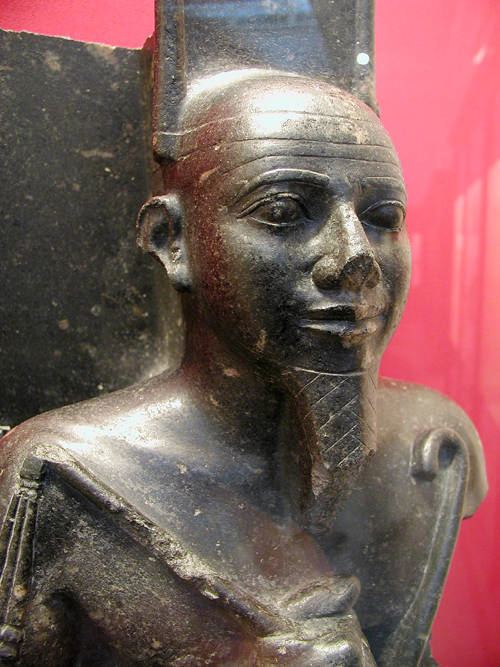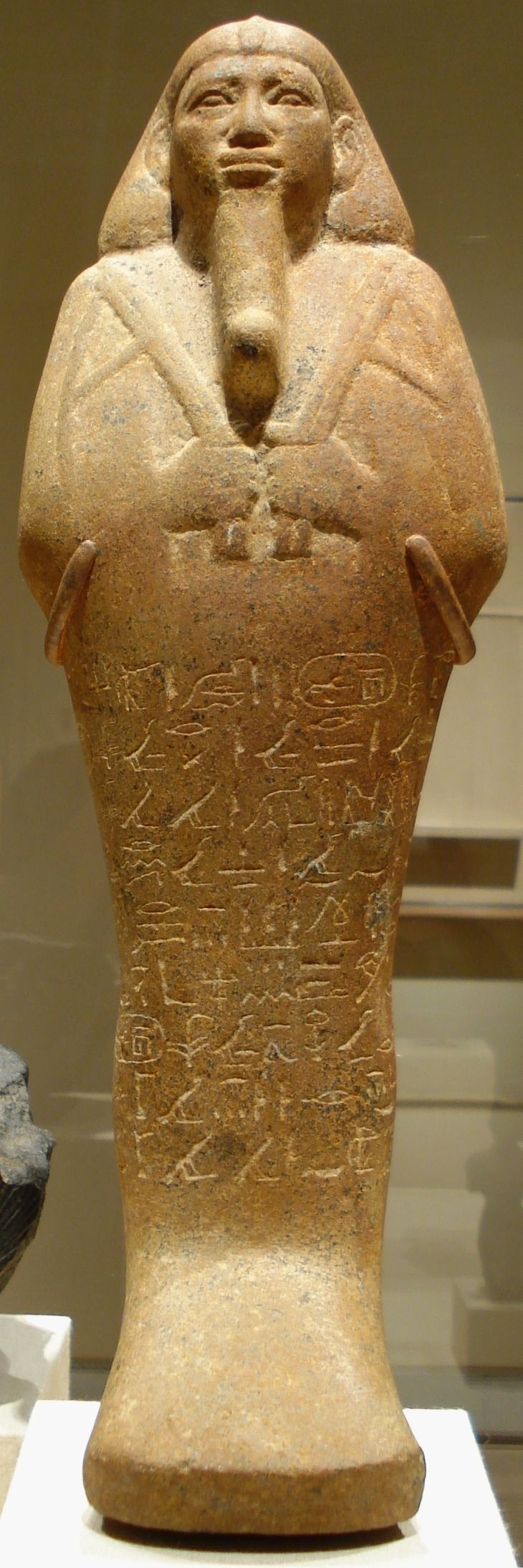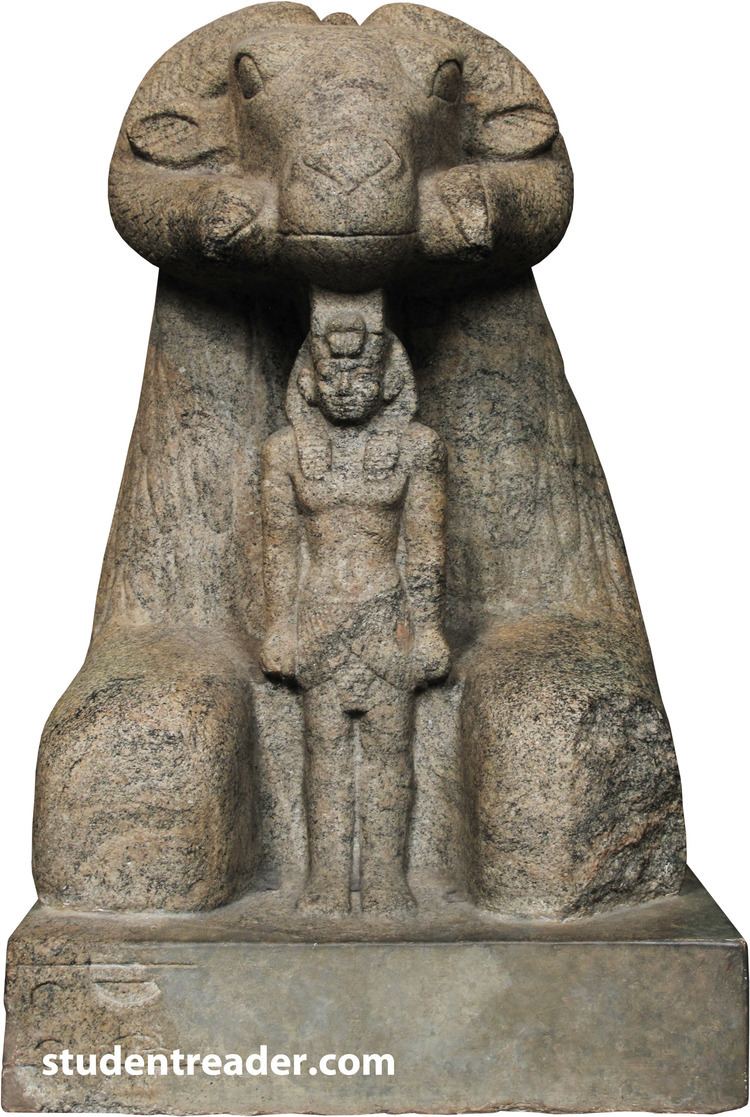Name Taharqa Taharqa Siblings Shebitku, Shepenupet II Grandchildren Senkamanisken | Parents Abar, Piye Mother Abar Children Amenirdis II, Atlanersa | |
 | ||
Reign 690–664 BCE (25th dynasty) Similar People | ||
The last pharaoh film will smith portrays pharaoh taharqa in 2013
Taharqa, also spelled Taharka or Taharqo (Biblical Tirhaka or Tirhaqa, Manetho's Tarakos, Strabo's Tearco), was a pharaoh of ancient Egypt of the Twenty-fifth Dynasty and qore (king) of the Kingdom of Kush.
Contents
- The last pharaoh film will smith portrays pharaoh taharqa in 2013
- Pharaoh taharqa the fifth ruler of the 25th dynasty
- Early life
- Ruling period
- Irregular accession to power
- Reign
- Assyrian invasion of Egypt
- Death
- Depictions
- References

Pharaoh taharqa the fifth ruler of the 25th dynasty
Early life

Taharqa was the son of Piye, the Nubian king of Napata who had first conquered Egypt. Taharqa was also the cousin and successor of Shebitku. The successful campaigns of Piye and Shabaka paved the way for a prosperous reign by Taharqa.
Ruling period

Taharqa's reign can be dated from 690 BC to 664 BC. Evidence for the dates of his reign is derived from the Serapeum stela, catalog number 192. This stela records that an Apis bull born and installed (fourth month of Peret, day 9) in Year 26 of Taharqa died in Year 20 of Psammetichus I (4th month of Shomu, day 20), having lived 21 years. This would give Taharqa a reign of 26 years and a fraction, in 690–664 BC.
Irregular accession to power

Taharqa explicitly states in Kawa Stela V, line 15, that he succeeded his predecessor (generally assumed to be Shebitku but now established to be Shabaka instead) after the latter's death with this statement: "I received the Crown in Memphis after the Falcon flew to heaven." The reference to Shebitku was an attempt by Taharqa to legitimise his accession to power. However, Taharqa never mentions the identity of the royal falcon and completely omits any mention of Shabaka's intervening reign between Shebitku and Taharqa possibly because he ousted Shabaka from power.

In Kawa IV, line 7-13, Taharqa states: “He (Taharqa) sailed northward to Thebes amongst the beautiful young people that His Majesty, the late King Shabataqo/Shebitku, had sent from Nubia. He was there (in Thebes) with him. He appreciated him more than any of his brothers. (There here follows a description of the [poor] state of the temple of Kawa as observed by the prince). The heart of his Majesty was in sadness about it until his Majesty became king, crowned as King of Upper and Lower Egypt (...). It was during the first year of his reign he remembered what he had seen of the temple when he was young”.
In Kawa V: line 15, Taharqa states “I was brought from Nubia amongst the royal brothers that his Majesty had brought. As I was with him, he liked me more than all his brothers and all his children, so that he distinguished me. I won the heart of the nobles and was loved by all. It was only after the hawk had flown to heaven that I received the crown in Memphis.”
Therefore, Taharqa says that King Shebitku, who was very fond of him, brought him with him to Egypt and during that trip he had the opportunity to see the deplorable state of the temple of Amun at Kawa, an event he remembered after becoming king. But on Kawa V Taharqa says that sometime after his arrival in Egypt under a different king whom this time he chose not to name, there occurred the death of this monarch (Shabaka here) and then his own accession to the throne occurred. Taharqa's evasiveness on the identity of his predecessor suggests that he assumed power in an irregular fashion and chose to legitimise his kingship by conveniently stating the possible fact or propaganda that Shebitku favoured him "more than all his brothers and all his children."
Moreover, in lines 13 – 14 of Kawa stela V, His Majesty (who can be none other but Shebitku), is mentioned twice, and at first sight the falcon or hawk that flew to heaven, mentioned in the very next line 15, seems to be identical with His Majesty referred to directly before (i.e. Shebitku). However, in the critical line 15 which recorded Taharqa's accession to power, a new stage of the narrative begins, separated from the previous one by a period of many years, and the king or hawk/falcon that flew to heaven is conspicuously left unnamed in order to distinguish him from His Majesty, Shebitku. Moreover, the purpose of Kawa V, was to describe several separate events that occurred at distinct stages of Taharqa’s life, instead of telling a continuous story about it. Therefore, the Kawa V text began with the 6th year of Taharqa and referred to the High Nile flood of that year before abruptly jumping back to Taharqa's youth at the end of line 13. In the beginning of line 15, Taharqa's coronation is mentioned (with the identity of the hawk/falcon—now known to be Shabaka—left unnamed but if it was Shebitku, Taharqa's favourite king, Taharqa would clearly have identified him) and there is a description given of the extent of the lands and foreign countries under Egypt's control but then (in the middle of line 16) the narrative switches abruptly back again to Taharqa's youth: "My mother was in Ta-Sety …. Now I was far from her as a twenty year old recruit, as I went with His Majesty to the North Land". However, immediately afterwards (around the middle of line 17) the text jumps forward again to the time of Taharqa's accession: "Then she came sailing downstream to see me after a long period of years. She found me after I had appeared on the throne of Horus...". Hence, the Kawa V narrative switches from one event to another, and has little to no chronological coherence or value.
Reign
Although Taharqa's reign was filled with conflict with the Assyrians, it was also a prosperous renaissance period in Egypt and Kush. When Taharqa was about 20 years old, he participated in a historic battle with the Assyrian emperor Sennacherib at Eltekeh. At Hezekiah's request, Taharqa and the Egyptian/Kushite army managed to stall the Assyrian advance on Jerusalem, with Sennacherib eventually abandoning the siege due to the loss of 185,000 soldiers at the hand of the Lord according to the Biblical account.
The might of Taharqa's military forces was established at Eltekeh, leading to a period of peace in Egypt. During this period of peace and prosperity, the empire flourished. In the sixth year of Taharqa's reign, prosperity was also aided by abundant rainfall and a large harvest. Taharqa took full advantage of the lull in fighting and abundant harvest. He restored existing temples, built new ones, and built the largest pyramid in the Napatan region. Particularly impressive were his additions to the Temple at Karnak, new temple at Kawa, and temple at Jebel Barkal.
Assyrian invasion of Egypt
It was during his reign that Egypt's enemy Assyria at last invaded Egypt. Esarhaddon led several campaigns against Taharqa, which he recorded on several monuments. His first attack in 677 BC, aimed at pacifying Arab tribes around the Dead Sea, led him as far as the Brook of Egypt. Esarhaddon then proceeded to invade Egypt proper in Taharqa's 17th regnal year, after Esarhaddon had settled a revolt at Ashkelon. Taharqa defeated the Assyrians on that occasion. Three years later in 671 BC the Assyrian king captured and sacked Memphis, where he captured numerous members of the royal family. Taharqa fled to the south, and Esarhaddon reorganized the political structure in the north, establishing Necho I as king at Sais. Upon Esarhaddon's return to Assyria he erected a stele alongside the previous Egyptian and Assyrian Commemorative stela of Nahr el-Kalb, as well as a victory stele at Zincirli Höyük, showing Taharqa's young son Ushankhuru in bondage.
Upon the Assyrian king's departure, however, Taharqa intrigued in the affairs of Lower Egypt, and fanned numerous revolts. Esarhaddon died en route to Egypt, and it was left to his son and heir Ashurbanipal to once again invade Egypt. Ashurbanipal defeated Taharqa, who afterwards fled to Thebes.
Death
Taharqa died in the city of Thebes in 664 BC and was followed by his appointed successor Tantamani, a son of Shabaka. Taharqa was buried at Nuri, in North Sudan.
Depictions
Taharqa was described by the Ancient Greek historian Strabo as having "Advanced as far as Europe", and (citing Megasthenes), even as far as the Pillars of Hercules in Spain.
In biblical depictions, he is the saviour of the Hebrew people, as they are being besieged by Sennacherib (Isaiah 37:8-9, & 2 Kings 19:8-9).
Actor Will Smith was developing a film entitled The Last Pharaoh, which he planned to produce and star as Taharqa. Carl Franklin contributed to the script. Randall Wallace was hired to rewrite in September 2008.
